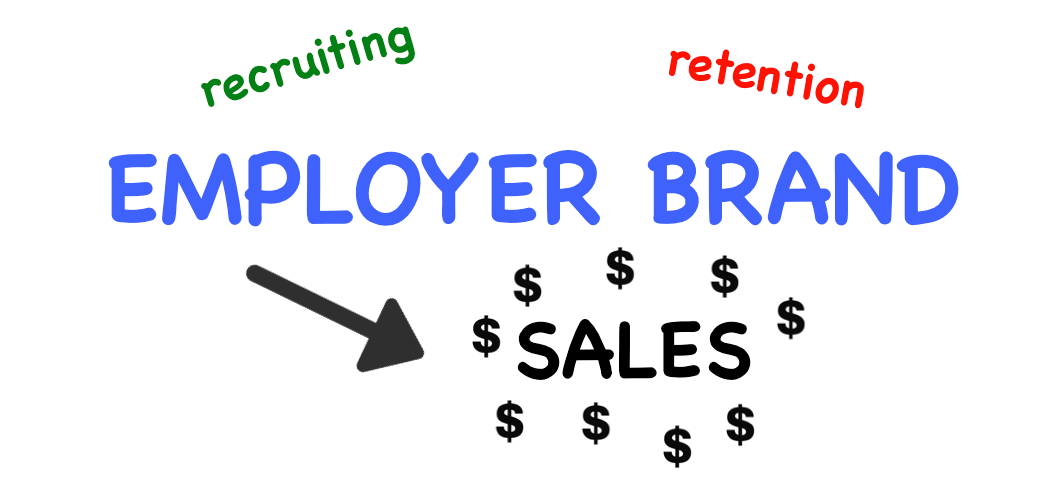
The reality of an Employer Brand (Ben Foster)
As Simon Sinek said, “Customers will never love a company until its employees love it first.”
When we decide where to shop – perhaps what to eat – we often think about price, product selection, and quality, to name a few criteria. However, I often find myself saying, “I’m not going to shop at [company X] because I hear they don’t treat their employees well.” Perhaps it’s because I’m an HR professional and always have my eyeballs an employer reputation. However, after a recession when jobs and employment remain a focal point within our state and federal administrations, and amidst the rise of Twitter, Glassdoor and other media outlets where companies find themselves in the spotlight for various reasons, employer reputations are everywhere.
Industry data is in fact showing that reputations of companies – through an employer lens – are affecting more than just their recruiting landscape. It’s affecting how much product is – or isn’t – moving off the shelves. Our HR and marketing communities have traditionally viewed employer branding as recruiting-focused. Now, however, it’s affecting top line growth, and we better pay attention.
Edelman Trust Barometer published in 2014 that employee voices are 3X more credible than their CEO’s voice, and that how an employee treats its employees can help or harm overall trust in the organization.
4Sight Search conducted a recent survey in 2016, and 70% of participants said they’ve chosen where to shop based on the company’s or brand’s reputation as an employer. 76% said they’d pay a premium for products from companies known to treat their employees well. Furthermore, when asked to compare the importance of a food production company’s treatment of their employees to how the food is actually produced (e.g. non-GMO, organic, humanely-raised and/or other value-added elements), 28% deemed employee treatment as “almost as important” as how the food is produced, and 34% felt it was “as important.” 10% even felt it was “more important.”
It’s no surprise that several corporations featured in various national and local “Best Places to Work” lists are seeing increased sales and revenue as well. I believe we are indeed seeing that employee happiness directly contributes to sales.
I’d be immensely intrigued at this experiment, if it could successfully be executed and measured: If a large CPG or retail corporation poured an additional, let’s say, $50MM into R&D and innovation aimed at ultimately strengthening their portfolio and driving sales and revenue . . . I’d like to compare it to investing an additional $50MM – or even $30MM – into added elements of employee happiness that staff voiced were important to them (e.g. extended family-leave policies, improved compensation structure, upgraded physical environments or infrastructure, diversity initiatives, tools to allow flexible or remote collaboration, daycare, etc.). I’d then be curious to see how both investments impact company performance, short and long-term, from (1) increase in engagement and output of current employees, but also (2) direct sales off the shelf, or online.
EMPLOYERS: Sign up for our free employer newsletter & talent view here.
MARKETERS: Sign up for our free talent newsletter here.


